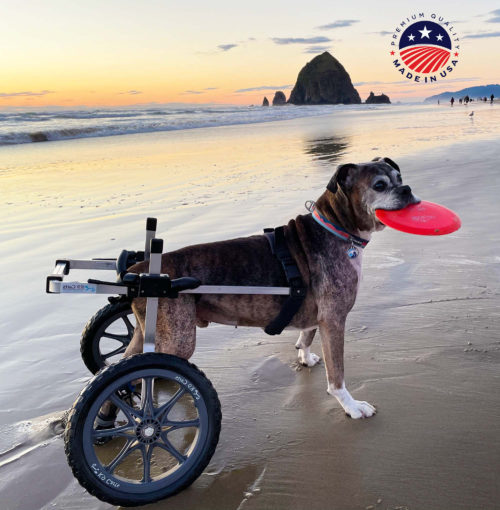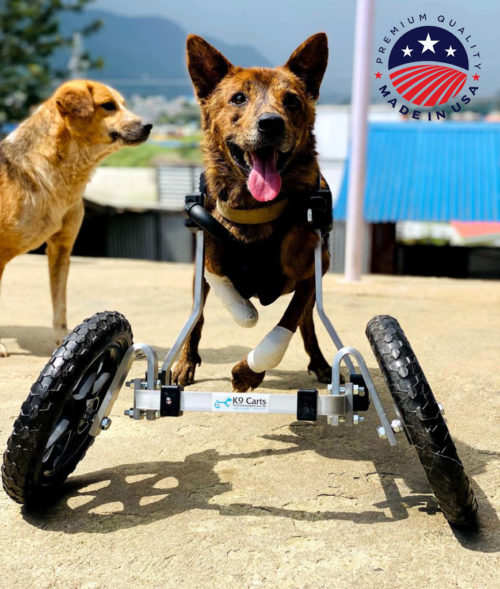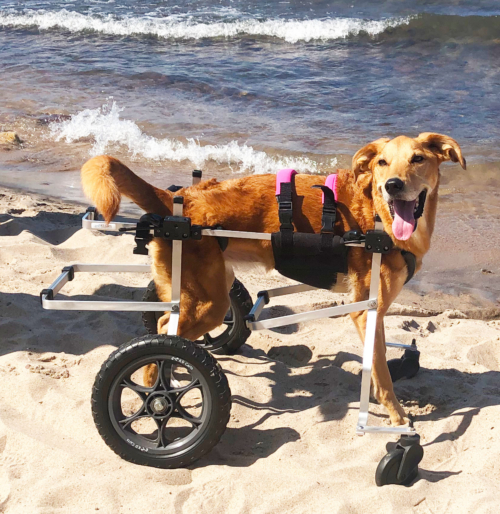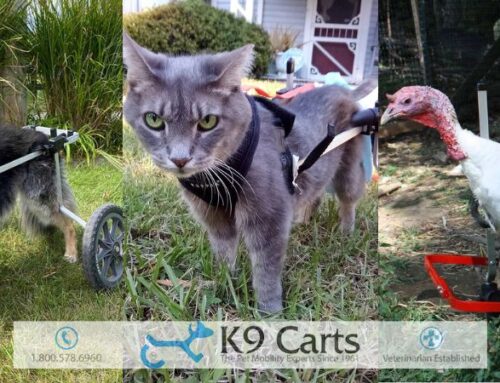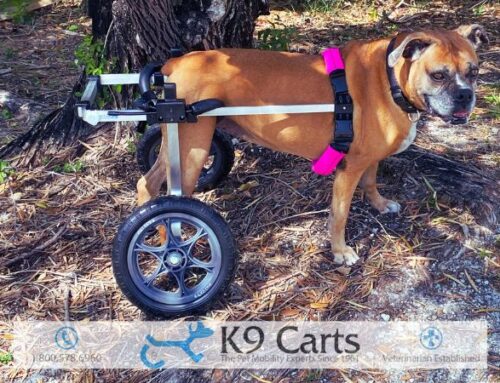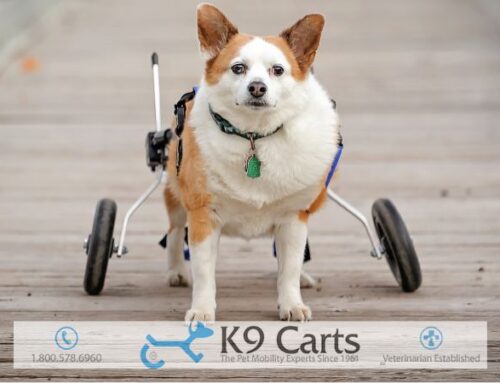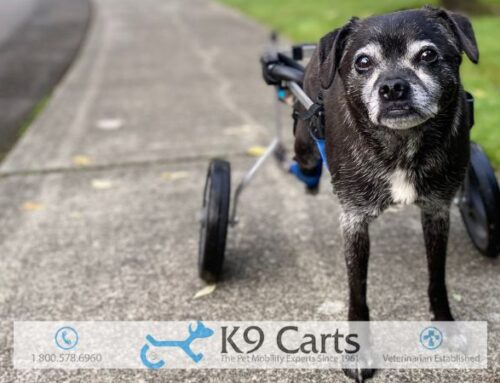Advancing age can bring many changes for humans and dogs alike, including increased risks for various health disorders. One such disorder, Cushing’s syndrome, often affects older dogs (and sometimes cats as well). If your canine family member has developed Cushing’s syndrome, it may suffer from a wide range of symptoms and complications, including loss of function in its hind legs. You owe it to yourself, and your dog, in order to gain a solid understanding of this syndrome, from its causes and symptoms to your options for treating and managing the condition’s effects. Take a look at this introductory guide to Cushing’s syndrome in dogs and how it can affect the hind legs.
What Is Canine Cushing’s Disease?
To understand the nature of Cushing’s disease, you first need to understand a few things about your dog’s endocrine system, which produces the hormones that control so many physical processes and reactions. Two types of glands in particular, the pituitary gland in the brain and the adrenal glands near the kidneys, control levels of a steroid hormone called cortisol. You may hear cortisol referred to as the “stress hormone” because the body produces more of this hormone in response to stressful situations to permit fight-or-flight reactions. But cortisol also plays important roles in weight management, immune system function, blood sugar, and inflammatory responses.
Unfortunately, too much cortisol can do harm as well as good. If your dog produces too much cortisol, that imbalance can lead to a set of symptoms known as Cushing’s syndrome, resulting in serious health problems that can shorten an animal’s life and/or reduce its quality of life.
What Causes Canine Cushing’s Disease?
In most dogs with Cushing’s syndrome, the disorder stems from a small tumor on the pituitary gland. In others, a tumor on one of the adrenal glands triggers the overproduction of cortisol. These tumors commonly develop after the age of 6, the same age that many dogs start to enter their senior years. However, younger dogs can develop it, too, especially if they’ve undergone extensive or repeated treatments with steroids for a previous health problem.
Some dogs may have more of a natural predisposition to Cushing’s syndrome than others. For instance, females get Cushing’s syndrome more often than males. Certain breeds also seem to have an elevated risk for Cushing’s syndrome. Examples include Miniature Poodles, Cocker Spaniels, Beagles, and Dachshunds.
What Are the Symptoms of Cushing’s Syndrome in Dogs?
Cushing’s syndrome can cause a number of telltale symptoms and complications, although these may prove hard to detect (or get mistaken for other age-related issues) during the first year or so of the disorder’s development. Pay close attention to the following common symptoms:
- Changes in eating and drinking habits – Excessive thirst (along with its natural consequence, excessive urination) is the primary symptom of Cushing’s syndrome. Your dog may also display a ravenous appetite for no obvious reason.
- Lethargy – A dog with Cushing’s syndrome may grow less active or energetic. It may also sleep more than once did, despite its reduced activity level.
- Appearance changes – If your dog suffers from Cushing’s syndrome, its skin may thin out, bruise easily, and host recurring infections. Hair loss also occurs in Cushing’s syndrome. At the same time, you may notice a pot belly developing on your dog.
- Panting – Cushings’ disease may cause your dog to pant frequently, even in the absence of extreme heat or tiring activity.
- Vision problems – If your dog is bumping into objects or getting disoriented in unfamiliar surroundings, it may have developed vision problems due to cushing’s syndrome. This disorder raises the risk for corneal diseases, which in turn can lead to reduced vision or even blindness.
Can Cushing’s Syndrome Weaken a Dog’s Hind Legs?
In addition to the common telltale signs noted above, the excess cortisol production of Cushing’s syndrome can also affect your pet’s muscular strength. This muscle weakness is actually the cause of the pot belly your dog may develop. It can also make a noticeable impact on the hind legs.
Your dog may suddenly find it difficult to climb stairs, get it or out of your car, hop up onto the couch, lie down, or walk normally due to progressive muscle wasting from Cushing’s syndrome. You may also see signs of coordination problems; for instance, your dog’s legs may drag, cross each other, or get tangled up. You may also notice a visible shrinkage of the leg muscles.
How Is Cushing’s Syndrome Diagnosed in Dogs?
Veterinarians must perform comprehensive diagnostic testing to tell Cushing’s syndrome apart from other diseases that might produce similar symptoms. Blood and urine samples can help confirm the diagnosis. A combination of unusually diluted urine and elevated liver enzymes point toward Cushing’s syndrome. Your veterinarian will also check for signs of an enlarged liver.
Two tests in particular can single out Cushing’s syndrome as the cause of your dog’s problems. In the ACTH test, your dog receives an injection of adrenocorticotropic hormone. An unusually strong adrenal response indicates Cushing’s syndrome. The dexamethasone suppression test can confirm Cushing’s syndrome if an injection of this steroid fails to lower your dog’s cortisol level (as it would in a healthy dog).
The presence of a pituitary or adrenal tumor will pretty much verify that your dog’s syndromes stem from Cushing’s syndrome. Veterinarians use X-rays and/or ultrasound imaging to identify these tumors and pinpoint their locations.
How to Manage Cushing’s Syndrome’s Impact on Your Dog’s Hind Legs
Cushing’s syndrome obviously poses concerns that any dog owner should address sooner rather than later. Untreated high cortisol levels can shorten a dog’s lifespan, partly because it also reduces immune resistance to various diseases. The good news is that you can definitely get the disorder treated while also providing other ways to optimize your dog’s quality of life. Let’s look at some treatment and management options.
1. Surgery
The only surefire way to arrest Cushing’s syndrome caused by a tumor involves removing the tumor surgically. Unfortunately, this procedure can cost a lot of money and present significant risks for patients. That’s why many veterinarians will recommend non-surgical strategies instead, especially for older animals.
2. Medication-based strategies
If your dog got Cushing’s syndrome because of a steroid medication it was taking, your veterinarian might recommend discontinuing that steroid in favor of some other drug. But while this measure might “cure” Cushing’s syndrome temporarily, the problem can always recur. Other drugs can help control Cushing’s syndrome and its effects on your dog. Examples include mitotane, trilostane, and selegiline. Dogs who suffer from corneal trouble as a result of their Cushing’s syndrome may benefit from medicated eye drops.
3. Assistive devices
If muscle weakness has affected your dog’s hind legs, it may benefit from assistive devices to help it get around and maintain an active lifestyle. The maintenance of regular exercise and activity can lift your dog’s spirits, stave off obesity, and keep other limbs and joints strong and limber. These benefits are especially critical for older dogs who can use all the help they can get to combat age-related weight gain and arthritis stiffness.
One highly effective option involves the use of a rear support dog wheelchair. This type of wheelchair, which can be custom-fitted for all sizes of dogs (from “teacup” pets to enormous Great Danes), relies on a pair of large, well-cushioned wheels attached by rails to a harness that wraps around your dog’s midsection.
To learn more about our custom-built dog wheelchairs, please visit the following pages:
If you wonder how you’re going to get your dog into its rear support wheelchair, don’t fret. You can also get a Doggie Lift to help you move your dog into its chair safely, easily, and comfortably. If your dog isn’t quite in need of a wheelchair yet but could still use some extra support for those weakened hind legs, consider purchasing a rear lift harness. This sling-like device allows you to help your dog support itself for specific tasks such as getting into a car or climbing stairs.
Give your dog what it needs to overcome the challenges of Cushing’s syndrome and get the most enjoyment out of its senior years. Take a look at K9 Carts’ range of hind leg support wheelchairs and related support devices. Our products feature sturdy construction, high-quality materials, and complete customization based on our online measurement charts. If you need any help choosing the right product and/or measuring your pet for a custom fit, contact our team for information and advice!



